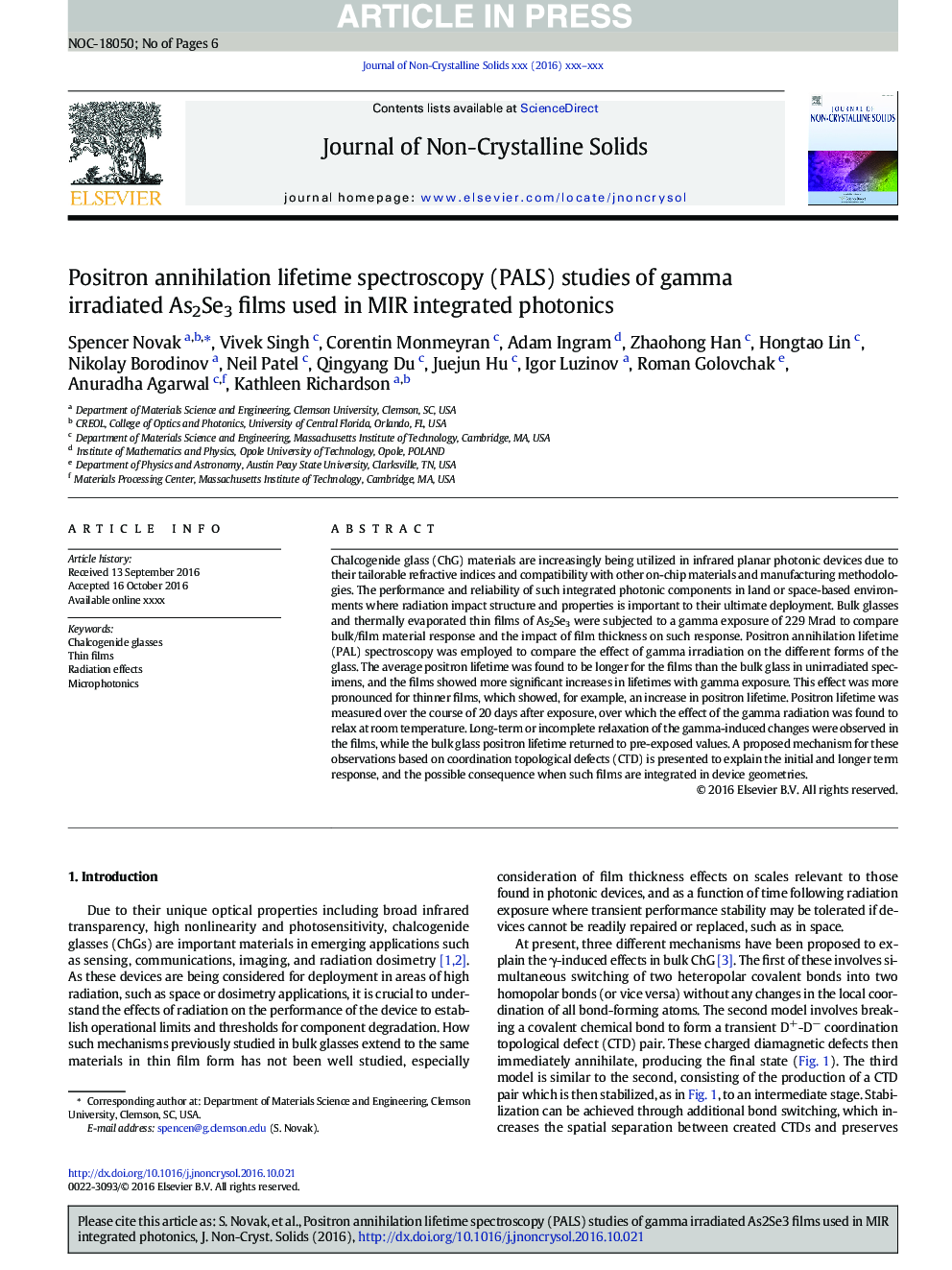| Article ID | Journal | Published Year | Pages | File Type |
|---|---|---|---|---|
| 5441484 | Journal of Non-Crystalline Solids | 2017 | 6 Pages |
Abstract
Chalcogenide glass (ChG) materials are increasingly being utilized in infrared planar photonic devices due to their tailorable refractive indices and compatibility with other on-chip materials and manufacturing methodologies. The performance and reliability of such integrated photonic components in land or space-based environments where radiation impact structure and properties is important to their ultimate deployment. Bulk glasses and thermally evaporated thin films of As2Se3 were subjected to a gamma exposure of 229Â Mrad to compare bulk/film material response and the impact of film thickness on such response. Positron annihilation lifetime (PAL) spectroscopy was employed to compare the effect of gamma irradiation on the different forms of the glass. The average positron lifetime was found to be longer for the films than the bulk glass in unirradiated specimens, and the films showed more significant increases in lifetimes with gamma exposure. This effect was more pronounced for thinner films, which showed, for example, an increase in positron lifetime. Positron lifetime was measured over the course of 20Â days after exposure, over which the effect of the gamma radiation was found to relax at room temperature. Long-term or incomplete relaxation of the gamma-induced changes were observed in the films, while the bulk glass positron lifetime returned to pre-exposed values. A proposed mechanism for these observations based on coordination topological defects (CTD) is presented to explain the initial and longer term response, and the possible consequence when such films are integrated in device geometries.
Related Topics
Physical Sciences and Engineering
Materials Science
Ceramics and Composites
Authors
Spencer Novak, Vivek Singh, Corentin Monmeyran, Adam Ingram, Zhaohong Han, Hongtao Lin, Nikolay Borodinov, Neil Patel, Qingyang Du, Juejun Hu, Igor Luzinov, Roman Golovchak, Anuradha Agarwal, Kathleen Richardson,
